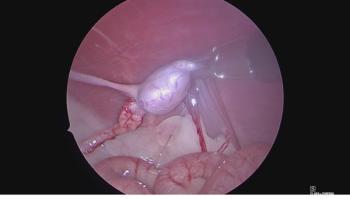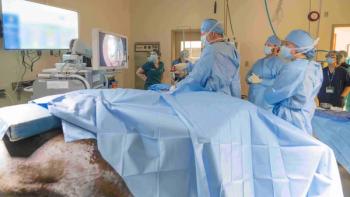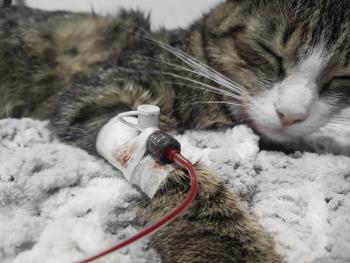
How to perform a regional limb perfusion in horses
This method of delivering antimicrobials to the limbs of veterinary equine patients is easily performed in the field or in the clinic.
GETTY IMAGES/Stephen BjorckWounds to the distal limb can be a common occurrence in horses. Depending on the location and underlying structures involved, treatment of these injuries can be challenging, and systemic antimicrobial selection can be limited due to cost and availability.
Performing a regional limb perfusion in a horse is a relatively easy and effective method to provide a high concentration of antimicrobial therapy to the soft tissue structures, joints and bones within the distal limb. This technique is a good adjunct to medical, surgical and systemic antimicrobial and local wound therapy to improve the response to treatment.
Considerations
Regional limb perfusions can be performed in an anesthetized horse or in a standing sedated horse with a local regional anesthetic block, depending on the disposition of horse, injection site and the location of the placement of the tourniquet. For the distal forelimb, a low four point or lateral palmar block with or without a dorsal ring block can be performed. For hindlimb wounds, a low or high four point or origin of suspensory with dorsal ring block is effective. For proximal cannon bone wounds, targeting the carpal and tarsal regions, a median/ulnar block can be performed for the forelimb and tibial peroneal for the hindlimb.1
The regional anesthetic block should be performed proximal to the location of the regional limb perfusion injection, which should be proximal to both the wound itself and tourniquet placement. This will allow for complete desensitization of the area and reduction of discomfort from both the tourniquet and the increased intravascular volume that may be felt after infusion of medication.
Figure 1. An example of hind distal limb regional limb perfusion. (Photo courtesy of Dr. Greg Staller, DVM, DACVS, Running ‘S' Equine Veterinary Services, Califon, New Jersey.)Sites for injection include the medial or lateral palmar/plantar digital veins for distal limb wounds (below the carpus/tarsus) (Figure 1) or the medial cephalic (forelimb) or medial saphenous (hindlimb) vein for wounds in the proximal metacarpus/tarsus or carpal/tarsal region (Figure 2).
Figure 2. An example of front limb upper limb regional limb perfusion. (Photo courtesy of Dr. Liberty Getman Tennessee Equine Hospital, Thompson's Station, Tennessee.)Perform the procedure in an open, clean, dry, quiet environment with good footing, adequate sedation and appropriate handling. Once the tourniquet is in place, be sure to keep the animal still, without buckling, resting a limb or walking, as this lessens the effectiveness of the tourniquet (and thus the procedure) by allowing possible escape of blood and antimicrobials into the systemic circulation.
Supplies needed
> Appropriate intravenous sedation to last approximately 45 minutes
> Chlorhexidine and alcohol soaked 4-x-4 gauze sponges or other aseptic preparation materials
> Sterile gloves
> Mepivacaine to perform a regional nerve block of the distal or proximal limb to be perfused
> Esmarch tourniquet (10-cm wide rubber bandage)
> Brown gauze x 2
> 25-, 23- or 21-ga butterfly catheter with extension set
> White tape
> Dry gauze
> Appropriate antimicrobials with appropriate syringe size selection, diluted for a total volume of 20 to 60 ml.
The type, dosage and combination of broad-spectrum antimicrobials are covered in a variety of textbooks and scientific articles.2 There are also doses and protocols that remain largely anecdotal. Drug selection and frequency of delivery can be adjusted based on the results of the bacterial culture and sensitivity patterns, if available.
The procedure
> After the end of a surgical procedure on a limb or once a horse is adequately sedated and appropriately blocked for regional perfusion, apply the tourniquet circumferentially to the limb above the level of the injury. You can place a brown gauze roll medially and laterally to the flexor tendons in both forelimbs and hindlimbs to help aid in more uniform compression of the limb by the tourniquet. In proximal limb wounds, place a tourniquet above and an additional tourniquet below the site of injury.
> Aseptically prepare the skin over the distended vein, advance a butterfly catheter into the vessel, secure it and slowly infuse diluted drug over the course of about five minutes. Leave the tourniquet in place for twenty to thirty minutes to maintain a high concentration of the antibiotic within the isolated region.
> You can remove the catheter and apply a small pressure wrap of gauze 4-x-4s held tightly in place around the injection site with white tape to reduce hematoma formation and extravasation of antimicrobials into the perivascular space. Alternatively, if the horse is not moving around, you can clamp off the extension line with a hemostat and tape it to the limb. The butterfly needle can remain in place until the appropriate time has lapsed; the tourniquet is then removed, and a pressure wrap can be placed over the site.
The procedure may be performed daily, alternating the type of antibiotic, or every other day using the same antibiotic. A typical series of regional limb perfusions is a total of three perfusions performed every other day, but guidance to the frequency should be based on reassessment of clinical improvement and could be more or less.
References
1. Moyer W. Equine joint injection and regional anesthesia. Chadds Ford, Pennsylvania: Academic Veterinary Solutions. 2011.
2. Baxter G. Diagnosis and management of wounds involving synovial structures. In: Equine wound management. Hoboken, New Jersey: Blackwell Publishing, 2008;480-481.
Dr. Amy Poulin Braim is an ACVS board-certified large animal veterinary surgeon with Running ‘S' Equine Veterinary Services in Califon, New Jersey. In addition to her clinical duties, when there is spare time, Dr. Poulin enjoys riding her thoroughbred mare, hiking and traveling with her husband.
Newsletter
From exam room tips to practice management insights, get trusted veterinary news delivered straight to your inbox—subscribe to dvm360.




